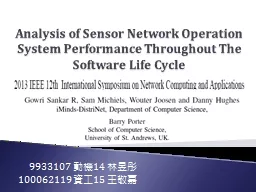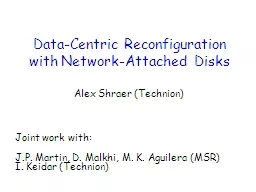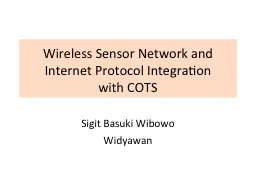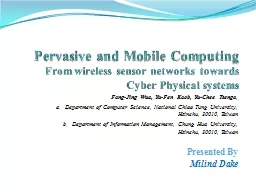PPT-Design and Implementation of an User-Centric WSN Architectu
Author : marina-yarberry | Published Date : 2016-07-02
政策メディア研究科修士二年 サイバーインフォマティクス CI 専攻 金澤貴俊 Outline Research background and motivation Proposal of an
Presentation Embed Code
Download Presentation
Download Presentation The PPT/PDF document "Design and Implementation of an User-Cen..." is the property of its rightful owner. Permission is granted to download and print the materials on this website for personal, non-commercial use only, and to display it on your personal computer provided you do not modify the materials and that you retain all copyright notices contained in the materials. By downloading content from our website, you accept the terms of this agreement.
Design and Implementation of an User-Centric WSN Architectu: Transcript
Download Rules Of Document
"Design and Implementation of an User-Centric WSN Architectu"The content belongs to its owner. You may download and print it for personal use, without modification, and keep all copyright notices. By downloading, you agree to these terms.
Related Documents














